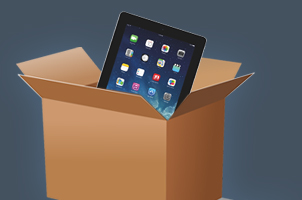Okay, so you pick up your iPad only to notice that it has 15 percent battery life left. Ouch! First, you just charged it about an hour or two ago, and second, you are in the dreaded red zone with about three hours of work left to go. A quickly draining battery is a problem and can leave you not only without a device but frustrated and ready to pull your hair out.
Before you start to wonder if you need a replacement iPad, know that this is a common issue that occurs and is the result of a battery that may be damaged. Here are some things you can do on your own to try to tackle the problem.
How Long Should My iPad Battery Last?
The owner’s manual for the iPad claims that the battery life is about 10 hours, but you likely do not actually get that much time from it, especially if the battery is damaged. There are many factors that influence the drainage rate of your battery from movies to apps and everything in between. With that said, your iPad battery should also not be draining soon after you unplug it from the charger either. If it does, this signals an issue may be present.
Check Your iPad Battery’s Health
Understanding the health of your device’s battery will help you lengthen its life. You should check its health by navigating to the settings section on the iPad. Click on battery and then battery settings. From here, you want to click on show detailed usage and narrow the search to the last seven days.
Once here, you can get a better idea of where all your battery life is going and what applications may be draining it quickly.
Common DIY Fixes for a Draining iPad Battery
Now that you have a better grasp of what is draining your battery, you can try to fix the problem on your own.
Turn Off Background App Refreshing
One of the biggest drainers of battery power is unused apps, especially those pesky ones that continue to run in the background. For example, your email app. Yes, it is quite convenient, but it runs in the background to constantly check for new emails and alert you to them. While this is a helpful app that does the background refreshing, you likely have unimportant apps doing the same. To tackle these, you want to head to your settings section and under the general tab, click on background app refresh. Here, you can disable any apps you need to.
Update the iPad
Updates are important and failing to keep your device up to date can cause issues with the battery. Fortunately, it is easy to check for any recent updates. Simply head over to the settings section and under general, click on software update. This will prompt your phone to check for any updates and you can install them accordingly.
Turn It Off and Back On
Ah, one of the good ole tricks of the trade. A good restart of the device is sometimes all it takes to get it working smoothly again. Simply turn off your iPad and let it sit for a couple of minutes and turn it back on. Hopefully, the new start will have solved the problem for you.
Reset Your Device
Resetting and restarting your device sound similar but they are not the same. Resetting your device means erasing all data on it and restoring it back to factory settings – similarly to when you pulled it out of the box. To do this, you will go to settings and then under general, click reset. You will want to click the option to erase all content and setting and then verify this by clicking on erase iPad.
Make sure that before you reset your iPad, you have saved everything on it, as erasing the data will completely wipe the device and all information stored on it will be lost. You should only use this troubleshooting step as a last resort.
Battery Replacement May Be Needed
Unfortunately, there are times when the battery is damaged and requires you to replace it. If you have tried the above troubleshooting steps with no luck or you notice that your device’s battery is swollen or won’t charge at all, it may be time for you to consider an iPad battery replacement. At I Repair Cracked Screens, we provide you with affordable iPad repair in NYC to get your device running smoothly again. Many of our repairs are done the same day and come with a warranty. Get your battery in check quickly with our help – call today or book your appointment online.

